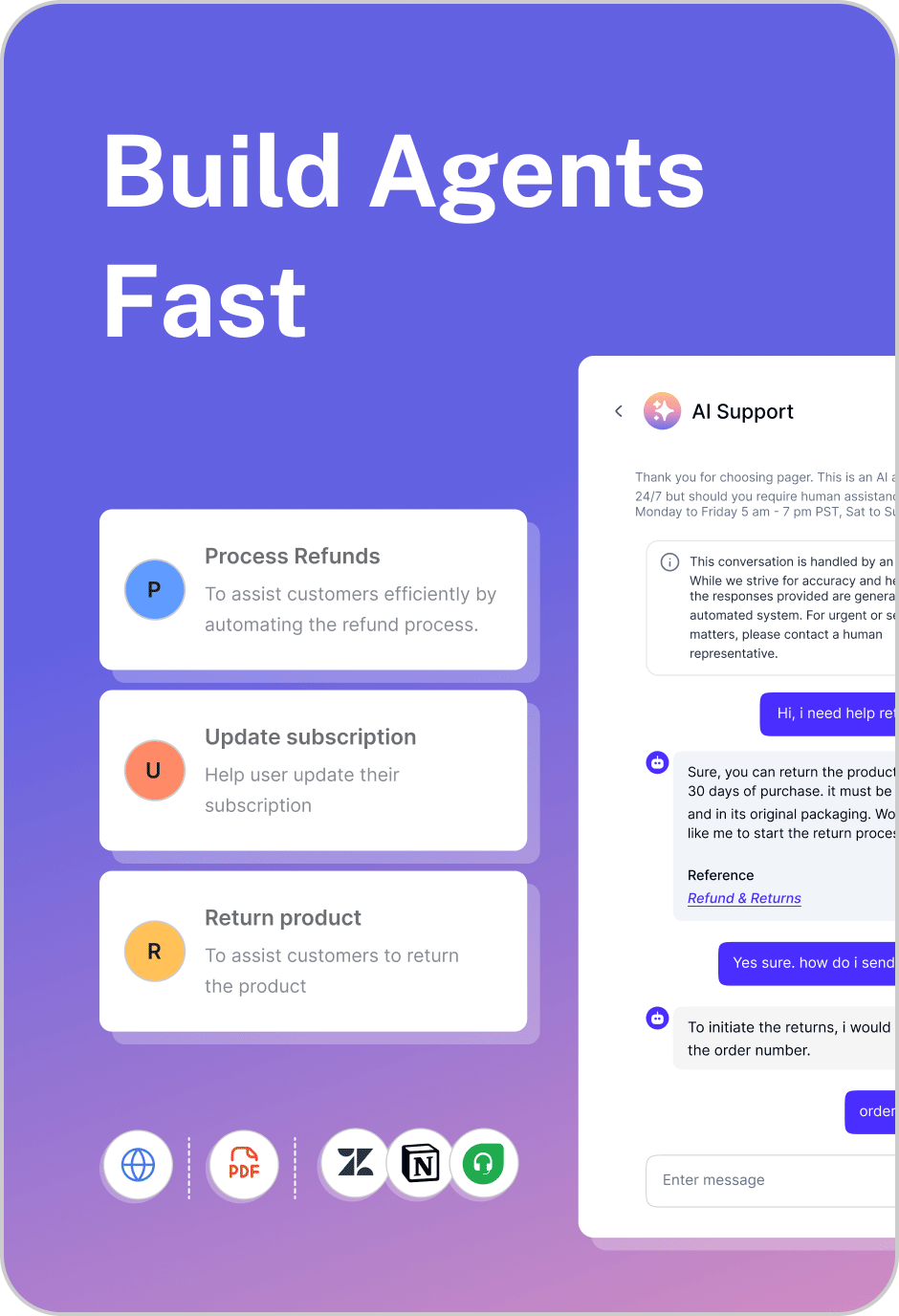
Top 10 Benefits of Using Chatbots in the Insurance Industry
Discover how AI-powered chatbots are transforming the insurance sector. Explore the top 10 benefits, real-world examples, and how to deploy one using pagergpt.
The insurance industry is evolving rapidly, and digital transformation is no longer optional, it's essential. Among the technologies leading this change, AI-powered chatbots have become crucial tools in delivering seamless, scalable customer experiences.
In this article, we’ll explore the top 10 benefits of using chatbots in the insurance industry. From speeding up claims processing to ensuring 24/7 support, we’ll break down how chatbots drive value and how solutions like pagergpt make deployment intuitive and scalable.
What Are Insurance Chatbots?
Insurance chatbots are AI-driven virtual assistants that can communicate with customers across multiple channels to answer queries, process claims, recommend policies, and offer support. Integrated into websites, apps, or social channels, these bots ensure fast and accurate responses, reducing operational overhead and increasing customer satisfaction.
How Are AI Chatbots Changing the Insurance Industry?
AI chatbots are creating significant shifts in how insurers engage with clients:
Faster Claims Assistance: Automating the first notice of loss (FNOL) and updating users on claim status.
Round-the-Clock Support: Offering 24/7 availability for both new customers and policyholders.
Lead Qualification: Capturing essential customer data and qualifying leads in real time.
Policy Recommendations: Suggesting suitable plans using natural language and historical data.
Operational Efficiency: Reducing load on human agents for repetitive tasks.
Top 10 Benefits of Chatbots in the Insurance Industry
Key benefits overview,
Instant claims processing
24/7 customer support
Automated lead generation
Reduced operational costs
Personalized policy suggestions
Fraud detection and prevention
Seamless customer onboarding
Consistent communication
Multilingual support
Enhanced customer satisfaction
Instant Claims Processing
Chatbots streamline FNOL by collecting required details through a conversational interface. This drastically cuts down claim processing times.
Example: A customer initiates a claim for vehicle damage directly via the website chatbot, submitting pictures and details instantly.
24/7 Customer Support
Insurance bots ensure assistance is available round the clock without increasing staff costs.
Example: Clients in different time zones get instant answers to queries about premium due dates or policy coverage.
Automated Lead Generation
Chatbots qualify visitors by asking pre-defined questions and routing qualified leads to agents.
Example: Someone exploring health insurance options answers a few quick prompts and gets connected to a specialist.
Reduced Operational Costs
With chatbots managing high volumes of inquiries, insurers can scale operations without increasing headcount.
Example: A bot answers 80% of repetitive policy questions, reducing the support team's workload significantly.
Personalized Policy Suggestions
AI enables bots to analyze user behavior and tailor product recommendations accordingly.
Example: A user looking at travel insurance is automatically shown add-ons for medical coverage based on their trip profile.
Fraud Detection and Prevention
Bots can flag inconsistencies in claims and escalate them for review, adding a layer of fraud protection.
Example: An unusually high claim frequency from a user prompts the chatbot to initiate additional verification steps.
Seamless Customer Onboarding
Insurance bots can walk users through KYC, policy options, and document uploads in one guided flow.
Example: A chatbot helps a new customer submit documents and set up their account within minutes.
Consistent Communication
Bots maintain tone, accuracy, and brand voice across all touchpoints.
Example: Whether a customer uses chat via app or website, the experience remains uniform.
Multilingual Support
Serving diverse regions? Bots can switch languages, breaking down communication barriers.
Example: A chatbot dynamically switches to Hindi or Spanish depending on the user’s location.
Enhanced Customer Satisfaction
Quick, reliable service means higher Net Promoter Scores (NPS) and better retention.
Example: Post-interaction surveys show users rate chatbot support higher than email or phone.
Unlock Insurance Chatbot Benefits with pagergpt
pagergpt makes it simple for insurance companies to train, deploy, and manage AI chatbots that drive real business outcomes.
Key Features
Multi-source Training: Use documents, websites, or CRMs to train your chatbot with insurance knowledge.
Pre-built Prompts & Personas: Jumpstart with tailored templates for claim processing or underwriting.
Live Agent Handoff: Seamlessly connect users to human reps when needed.
Omni-channel Support: Deploy across WhatsApp, websites, mobile apps, and more.
Deploy Your Insurance Chatbots in Minutes
Step 1 : Train your bot
Connect data sources like your FAQ page, policy docs, or CRM to train your chatbot.

Step 2: Test your bot
Run simulations to ensure it understands policy logic, claim conditions, and user queries effectively.

Step 3: Deploy your bot
Push your bot live across all preferred channels, set up live agent fallback, and capture leads.
Explore pagergpt pricing to find a plan that aligns with your support and automation goals.

Conclusion
Chatbots are no longer a luxury—they’re a strategic necessity for modern insurers. They boost customer experience, improve efficiency, and lower support costs. pagergpt empowers insurance providers to roll out smart AI assistants without heavy dev cycles or integrations.
Book a demo to see how you can revolutionize your insurance support with AI chatbots.
FAQs
How do insurance chatbots handle sensitive data?
Chatbots like those built with pagergpt follow strict security protocols, including GDPR and SOC 2 compliance.
Can chatbots recommend the right policy to users?
Yes, through historical data and behavior patterns, bots can guide users to the best-fit products.
How long does it take to train a chatbot for insurance?
With pagergpt, training can be done in a few hours using your documents or website.
Can bots process claims without human intervention?
For standard claims, yes. Complex cases are routed to live agents.
What channels can insurance bots be deployed on?
They can run on websites, mobile apps, WhatsApp, and more.
Do bots support multiple languages for international customers?
Yes, multilingual capabilities are built-in to support global users.
How do chatbots improve customer retention in insurance?
By ensuring 24/7 availability, instant support, and proactive engagement.
Engage website visitors instantly,
resolve customer queries faster.
Do more than bots with pagergpt



